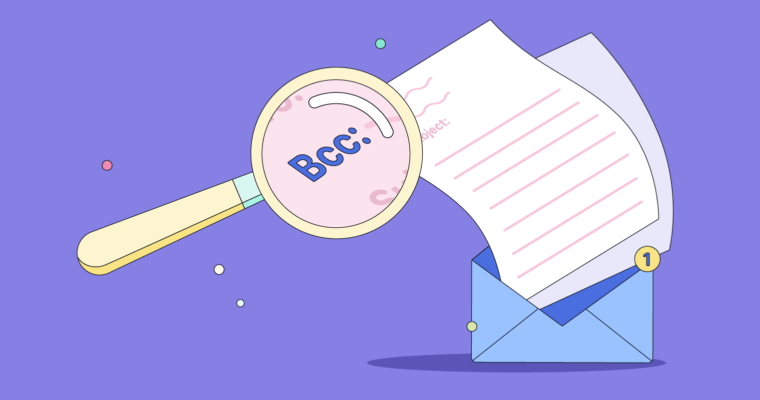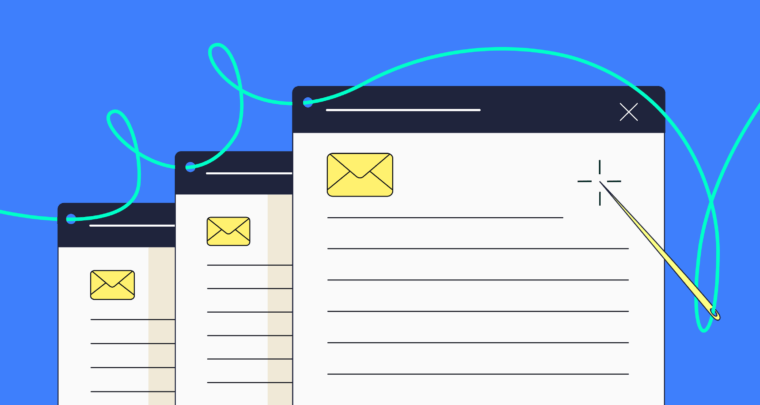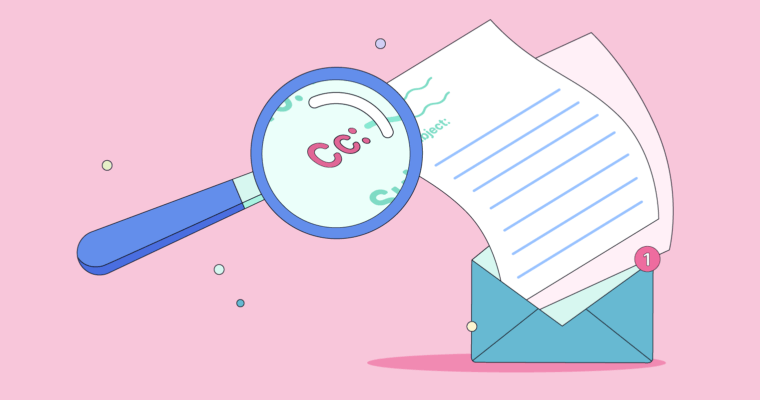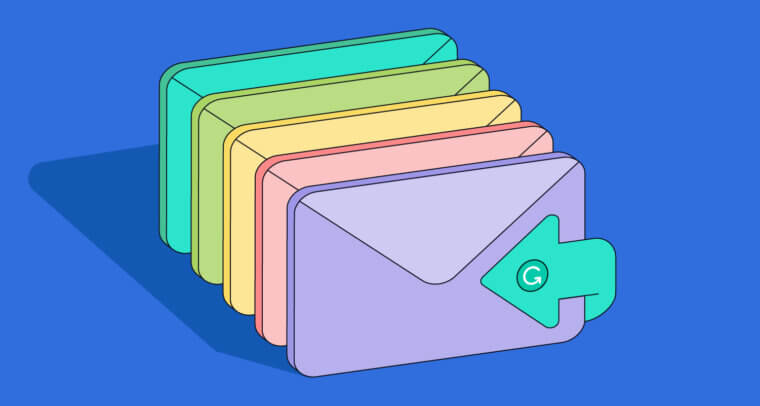
The way we work has changed a lot in recent years, but one constant remains: Email is still the default method of communication for many. Writing a good email can be tricky, especially in a professional setting. It’s a good idea to know some of the unwritten rules of professional email communication so you can get your message across clearly and effectively.
One key rule for working professionals: Keep it short.
Below we’ll talk about why short emails are usually best as well as useful tips for keeping your messages concise, professional, and effective.
Why are short emails best?
In college and grad school, lengthy, in-depth papers are the norm, relaying dense information to an audience that plans to read the text from beginning to end. But in the professional world, the expectation is that information will be relayed more quickly. In fact, long work emails can gum up the process and leave your messages sitting in inboxes, waiting for a response.
Put plainly, who wants to plunge into a long email when they already have a ton of other messages to get to before 5 p.m.?
Concise emails, on the other hand, have several benefits:
- They make it easier to reply quickly.
- They can increase your response rate.
- They can cut down on your overall response time.
For context, according to truelist.co, about 40 percent of emails are viewed on mobile devices, so you’ll want to consider that when writing. Ideally, your message will be short enough to fit on a mobile screen without the reader having to do much scrolling, get to the point quickly, and hold the reader’s attention. A word count of about 80 to 100 words is ideal to keep readers engaged, regardless of the device they’re using.
However, there is a caveat to the short-is-best rule: Don’t overdo it. After all, who hasn’t received a two-sentence email that feels curt and impersonal? That’s not the goal here. Instead, keep things cordial while making your point, so you probably don’t want to dip too far below the 80-word range unless you know the recipient won’t take it personally.
6 steps to keep your emails short
These tips can help you streamline your emails without losing a personal touch:
1 Write with your goal in mind
With every email, there should be a goal, whether it’s to get a deliverable by the deadline, ask your manager to approve your new project idea, or simply to send a quarterly report. The key is to keep that goal top of mind as you start writing. That will help you stick to the point and avoid tangents, thereby reducing the overall length of your email. It can also speed up your writing, proofreading, and editing processes. Just remember, for clarity and conciseness there should generally be only one goal per email.
2 Look for repeats
Depending on your writing style, you may tend to repeat yourself in emails, especially if you use a stream-of-consciousness approach. Taking a critical eye to find repetitive information can help you cut things down and avoid redundancies.
In a similar vein, it’s a good idea to look out for wordiness, which can happen if you like to write using the passive voice.
3 Reassess small talk
This is where things can feel tricky—you want to be personable, but you don’t want to add unnecessary fluff to your email. Small talk can fall into the latter category, and it can be cliché. Look at the niceties and ask yourself if they’re absolutely necessary. Usually, it’s best to keep small talk to a sentence or two per email.
4 Nix unnecessary filler words
You may use a lot of filler words and phrases. This can be a way of protecting yourself from potential backlash or making sure that you don’t come off as demanding or impatient, but filler words are usually unnecessary and can make you sound uncertain or lacking confidence in your request. Cutting out filler words and phrases can streamline your emails and keep things professional. Plus, your message won’t lose substance.
Here are some common filler words and phrases to watch out for:
- Essentially
- Basically
- Just
- Very
- Really
- I think
- I mean
- Sort of
- No worries
- Needless to say
- It goes without saying
- At the end of the day
- As you know
5 Take advantage of formatting
Formatting can be a powerful tool, especially when it comes to making your point faster. For example, using bullet points to highlight key information or bolding the most important part of your email (like a call to action, or CTA) can help direct your reader’s eye and make it easier for them to understand what is most important. It also breaks up big blocks of text and makes your email more scannable. This is especially helpful if you absolutely must include contextual information in your email.
6 Include a clear call to action
Calls to action make it easier to get the results you need and accomplish your goal. Include aspects like:
- The desired action (e.g., “Let me know if you can do this” or “Contact X”)
- The method of action (e.g., email, Slack, or an in-person meeting)
- Other key contacts who should be looped in, if applicable
- The deadline
Remember, writing short is a skill that takes time to develop, but it will get easier with practice, and because email etiquette relies, at least partially, on observing the style and methods of others, your colleagues may even take a cue from your emails, saving you time as well. Either way, they’ll appreciate the effort and it will be easier to get the responses you need.
3 examples of shortened emails
To give you a better idea of how to cut down emails, here are three long sample emails and what they’d look like after being edited for length:
Example 1: Replying to a colleague’s question
Original:
Hi [Name],
Hope you’re having a great week. I was looking around the company Wiki to see if I could find the answer to your question, but it doesn’t seem to be there, so I asked my manager and they said [X], but I don’t think that’s exactly what you were looking for here, so I kept looking.
Long story short, it looks like there are three possible answers to your question: [A], [B], or [C]. I’m not sure which would best fit your specific needs, so if I’m off base, just let me know. If so, I was wondering if you could send me some more context about the project you’re working on. I think that might help me figure out exactly what you’re going for here.
Anyways, I know you’re under a pretty tight deadline, so I wanted to get this information to you as fast as possible. I do have some extra time this week, so if you need me to go back in, again, I’m happy to keep digging. I’m just not totally sure I know if I’m going in the right direction here.
Hope you’re having a good week.
Best,
[Name]
Shortened:
Hi [Name]
I was digging into some research around your question, and it looks like there could be three possible solutions:
- [A]
- [B]
- [C]
If these aren’t what you had in mind, I’m happy to keep looking. (It would help if you could send me more context around the project.) If you get back to me by [date], I should be able to respond by [date].
I’ll keep an eye out for your reply so I can get on it ASAP.
Best,
[Name]
Example 2: Asking a colleague for feedback
Original:
Hi [Name],
It was so nice to see you the other day. It actually got me thinking. As you know, peer reviews are coming up in the next few weeks. I was hoping you might be able to be one of my peer reviewers this quarter, if you’re available. No worries if not! I totally understand. And of course, I’d be happy to reciprocate.
Specifically, I thought you’d be a good person to ask since we worked together on [X] this past month. I think your perspective would be a really useful way to examine my skills, how I might have grown, and what I should keep working on going forward.
Can you let me know if you’re up to being one of my peer reviewers this quarter? (I was hoping to finalize my peer reviewers by [date], so if you could get back by then, that would be amazing.) Also, feel free to send along any questions you may have. I’m always happy to help.
Thanks!
[Name]
Shortened:
Hi [Name],
It was so nice to see you the other day. I was wondering if you could be one of my peer reviewers this quarter? (Happy to reciprocate!) If you could let me know by [date] if you’re up for it, that would be great. Please feel free to send me any questions.
Thanks!
[Name]
Example 3: Updating your manager about a project
Original:
Hi [Name],
I just wanted to give you a quick update about the project I’m working on since I know that’s going to be important for the Q3 report. As you know, the last time I updated you, I was working on finalizing [X], and I just needed [Y] to get to the final phase of the project.
As of today, we’re almost completely on track to be done by the EOM deadline. The only thing holding us back is getting feedback from the data team. I’ve been reaching out every day, and I finally heard back today, so that should be getting back on track too, assuming they deliver by the end of the week. I’ll keep you posted if not, of course. Other than that, we’re doing good. I think the project will be a great addition to the Q3 report.
I’ve attached some screenshots of the presentation so far. Keep in mind that it’s a working draft, and a lot could change before it’s ready to be presented to the company, but I do think the first ten slides are pretty set.
Thanks,
[Name]
Shortened:
Hi [Name],
I wanted to check in and let you know that the project is mostly on track for the EOM deadline. I’m waiting on the final figures from the data team, but as soon as they come through we’ll have all the pieces we need to finish the project. I’ve attached a working draft of the Q3 presentation. It’s tentative, but I think it shows promise.
Feel free to reach out if you have any questions.
Thanks,
[Name]






